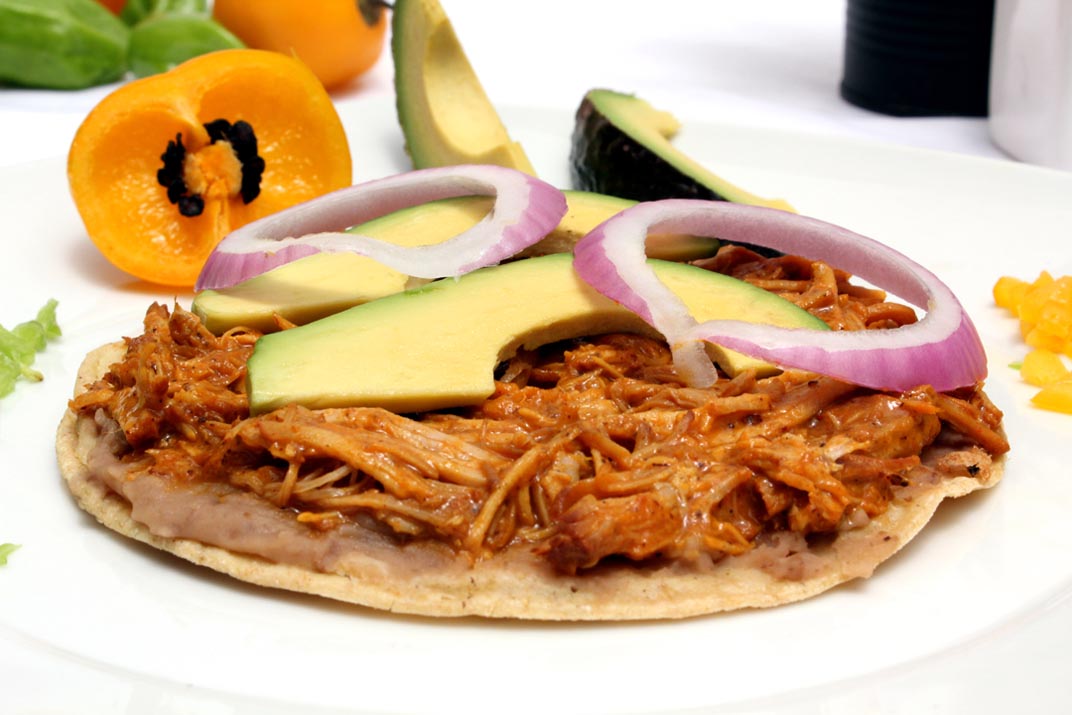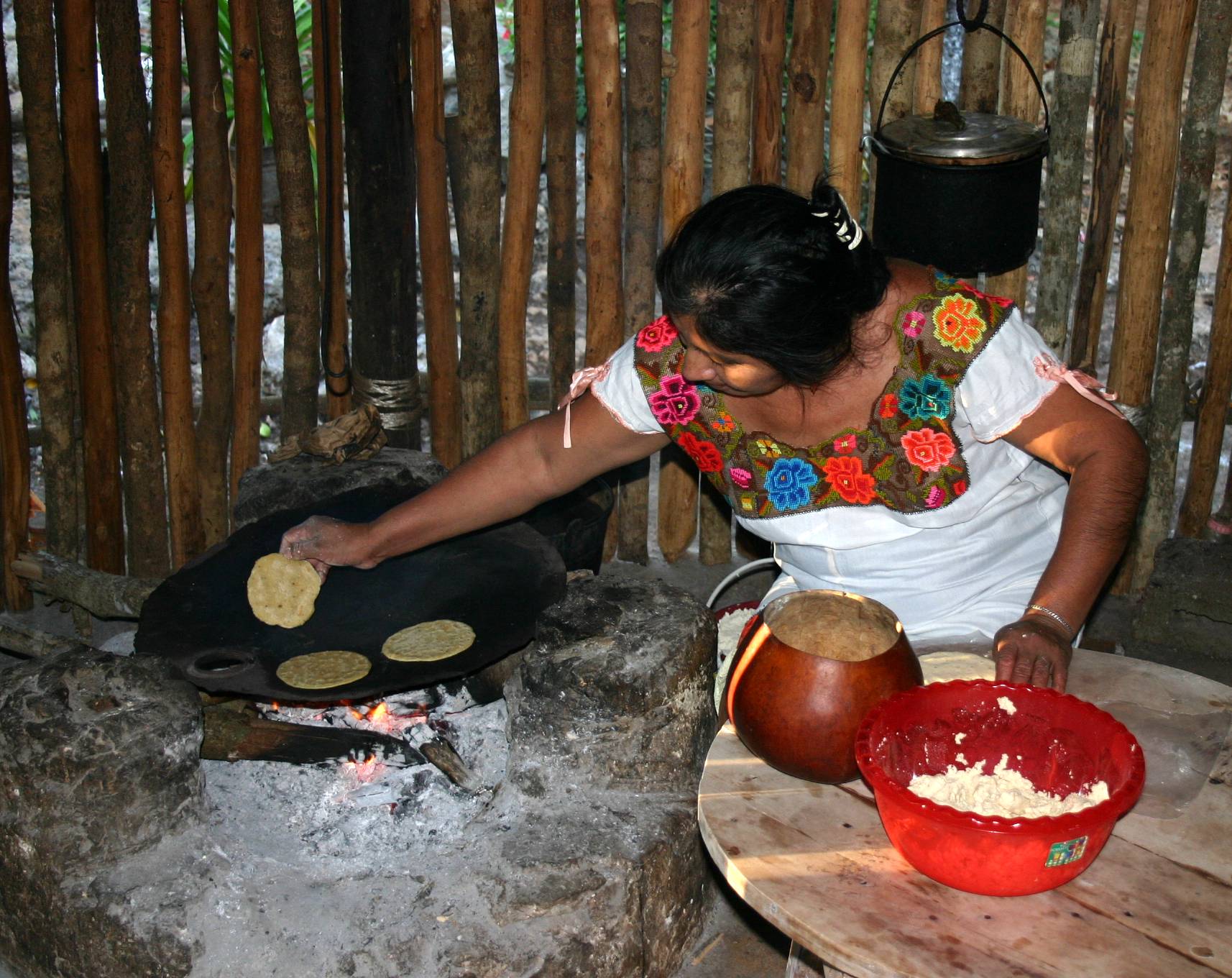|
Panucho
A panucho is a Mexican food specialty from the Yucatán made with a refried tortilla that is stuffed with refried black beans and topped with chopped cabbage, pulled chicken or turkey, tomato, pickled red onion, avocado, and pickled jalapeño pepper. It is occasionally topped with eggs in some variations. Panuchos are mostly sold in the evenings when parties of friends or family go out to eat. Panuchos are served at fast-food restaurants called panucherias which also serve salbutes, tostadas, tortas, and caldos. Panuchos are fried and topped to order and often served with soda. References {{Mexican cuisine Cuisine of Yucatán Tortilla-based dishes ... [...More Info...] [...Related Items...] OR: [Wikipedia] [Google] [Baidu] |
Cuisine Of Yucatán
Mexican cuisine consists of the cuisines and associated traditions of the modern country of Mexico. Its earliest roots lie in Mesoamerican Cuisine, Mesoamerican cuisine. Mexican cuisine's ingredients and methods arise from the area's first agricultural communities, such as those of the Olmecs, Olmec and Maya civilization, Maya, who domesticated maize, created the standard process of nixtamalization, and established foodways. Successive waves of other Mesoamerican groups brought with them their cooking methods. These included the Teotihuacanos, Toltec, Huastec civilization, Huastec, Zapotec civilization, Zapotec, Mixtec, Otomi people, Otomi, Tarascan state, Purépecha, Totonac, Mazatec, Mazahua people, Mazahua, and Nahuas, Nahua. With the Mexica formation of the multi-ethnic Triple Alliance (Aztec Empire), culinary foodways became infused (Aztec cuisine). Today's food staples native to the land include corn (maize), turkey, beans, squash, amaranth, Chia seed, chia, avocados, to ... [...More Info...] [...Related Items...] OR: [Wikipedia] [Google] [Baidu] |
Yucatán Peninsula
The Yucatán Peninsula ( , ; ) is a large peninsula in southeast Mexico and adjacent portions of Belize and Guatemala. The peninsula extends towards the northeast, separating the Gulf of Mexico to the north and west of the peninsula from the Caribbean Sea to the east. The Yucatán Channel, between the northeastern corner of the peninsula and Cuba, connects the two bodies of water. The peninsula is approximately in area. It has low relief and is almost entirely composed of porous limestone. The peninsula lies east of the Isthmus of Tehuantepec, the narrowest point in Mexico separating the Atlantic Ocean, including the Gulf of Mexico and Caribbean Sea, from the Pacific Ocean. Some consider the isthmus to be the geography, geographic boundary between Central America and the rest of North America, placing the peninsula in Central America. Politically, all of Mexico, including the Yucatán, is generally considered part of North America, while Guatemala and Belize are considered pa ... [...More Info...] [...Related Items...] OR: [Wikipedia] [Google] [Baidu] |
Tortilla
A tortilla (, ) is a thin, circular unleavened flatbread from Mesoamerica originally made from maize hominy meal, and now also from wheat flour. The Aztecs and other Nahuatl speakers called tortillas ''tlaxcalli'' (). First made by the indigenous peoples of Mesoamerica before colonization, tortillas are a cornerstone of Mesoamerican cuisine. Corn tortillas in Mesoamerica are known from as early as 500 BCE. Etymology The word ''tortilla'' is derived from the Spanish word ''torta'', meaning "cake," plus the diminutive -''illa''; as a result, the word means "little cake" in Spanish. Varieties Corn Tortillas made from nixtamalized maize meal (''masa de maíz'') are the oldest variety of tortilla. They originated in Mexico and Central America, and remain popular throughout the Americas. Peoples of the Oaxaca region in Mexico first made tortillas at the end of the Villa Stage (1500 to 500 BCE). Towards the end of the 19th century, the first mechanical utensils for making t ... [...More Info...] [...Related Items...] OR: [Wikipedia] [Google] [Baidu] |
Avocado
The avocado, alligator pear or avocado pear (''Persea americana'') is an evergreen tree in the laurel family (Lauraceae). It is native to Americas, the Americas and was first domesticated in Mesoamerica more than 5,000 years ago. It was prized for its large and unusually Avocado oil, oily fruit. The tree likely originated in the highlands bridging south-central Mexico and Guatemala. Avocado trees have a native growth range from Mexico to Costa Rica. Its fruit, sometimes also referred to as an alligator pear or avocado pear, is botanically a large Berry (botany), berry containing a single large seed. Sequencing of its genome showed that the evolution of avocados was shaped by polyploidy events and that commercial varieties have a Hybrid (biology), hybrid origin. Avocado trees are partly Self-pollination, self-pollinating, and are often Plant propagation, propagated through grafting to maintain consistent fruit output. Avocados are presently cultivated in the tropical and Medi ... [...More Info...] [...Related Items...] OR: [Wikipedia] [Google] [Baidu] |
Salbute
A salbut (pl. salbutes, ) is a puffed deep fried tortilla that is topped with lettuce, sliced avocado, pulled chicken or turkey, tomato and pickled red onion. Salbutes originate from the Yucatán Peninsula and are a staple in Belize. Salbutes are mostly sold in the evenings when parties of friends or family go out to eat. They are served at fast food restaurants called ''panucherias'' which also serve panuchos, tostadas, torta Torta is a culinary term that can, depending on the cuisine, refer to cakes, pies, flatbreads, sandwiches, or omelettes. Usually, it refers to: * cake or pie in South America, much of Europe, and southern Philippines * flatbread in Spain * a t ...s, and caldos. Salbutes are fried and topped to order and often served with soda drinks. In Yucatec Spanish, salbutes is the plural of salbut. References {{Mexican cuisine Mexican cuisine Belizean cuisine Tortilla-based dishes ... [...More Info...] [...Related Items...] OR: [Wikipedia] [Google] [Baidu] |
Tostada (tortilla)
Tostadas ( or ; , ) are various dishes in Mexican and Guatemalan cuisine based on toasted tortillas. They are generally a flat or bowl-shaped tortilla that is deep-fried or toasted, but may also be any dish using a ''tostada'' as a base. They can be consumed alone, or used as a base for other foods. Corn tortillas are usually used for tostadas, although tostadas made of wheat or other ingredients are also found. Preparation Just as stale bread can be made palatable as toast, a stale tortilla can be repurposed as a tostada by frying it in boiling oil until it becomes golden, rigid, and crunchy. Commercial tostadas are similar in taste and consistency to tortilla chips. Tostadas are a standalone dish in Mexico and the American Southwest, and are also served as a companion to various Mexican foods, mostly seafood and stews, such as menudo, birria and pozole. Tostadas can be found across Mexico. Toppings for tostadas are mostly the same as those used for tacos: a ... [...More Info...] [...Related Items...] OR: [Wikipedia] [Google] [Baidu] |
Torta
Torta is a culinary term that can, depending on the cuisine, refer to cakes, pies, flatbreads, sandwiches, or omelettes. Usually, it refers to: * cake or pie in South America, much of Europe, and southern Philippines * flatbread in Spain * a type of sandwich in Mexico * a type of omelette in northern Tagalog-speaking areas of the Philippines. Etymology The word comes from the Spanish ''torta'' (), itself from Late Latin ''torta'', an abbreviation of ''torta panis'' ("twisted bread"). 'Torth' – Welsh for 'loaf' is of the same derivation (Latin: torta). The English word "tart" is related. Cakes Latin America and Spain In some countries of Latin America, the word ''torta'', in a very common usage, is for sweet cakes (tortes), such as a Wedding cake, wedding or birthday cake. This meaning is also present in other European languages. For example, the Italian language, Italian ''torta'', German language, German ''Torte'' or French language, French ''tarte''. In Mexico, "t ... [...More Info...] [...Related Items...] OR: [Wikipedia] [Google] [Baidu] |
Broth
Broth, also known as bouillon (), is a savory liquid made of water in which meat, fish, or vegetables have been simmered for a short period of time. It can be eaten alone, but it is most commonly used to prepare other dishes, such as soups, gravies, and sauces. Commercially prepared liquid broths are available, typically chicken, beef, fish, and vegetable varieties. Dehydrated broth in the form of bouillon cubes was commercialized beginning in the early 20th century. Stock versus broth Many cooks and food writers use the terms ''broth'' and ''stock'' interchangeably. In 1974, James Beard (an American cook) wrote that stock, broth, and bouillon "are all the same thing". While many draw a distinction between stock and broth, the details of the distinction often differ. One possibility is that stocks are made primarily from animal bones, as opposed to meat, and therefore contain more gelatin, giving them a thicker texture. Another distinction that is sometimes made i ... [...More Info...] [...Related Items...] OR: [Wikipedia] [Google] [Baidu] |







